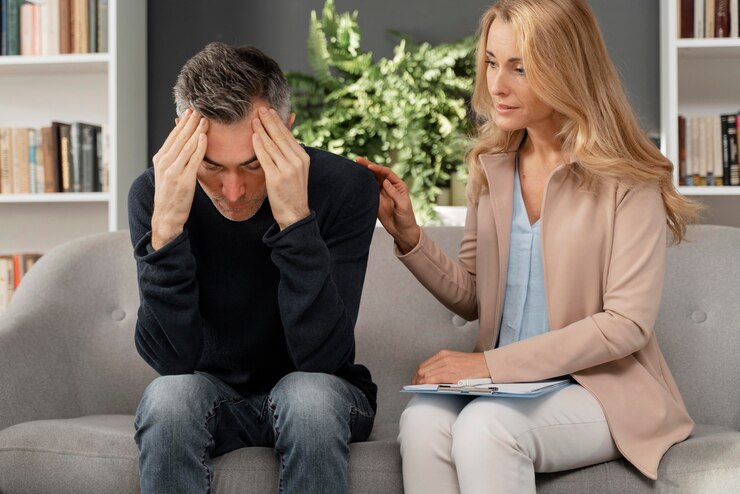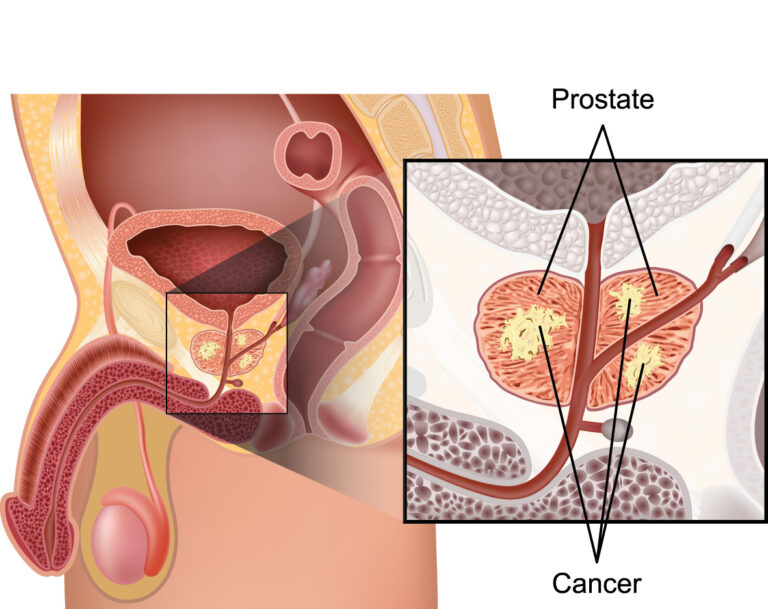The Causes and Types of Phobias: What You Need to Know

What Are Phobias and Why Are They Significant?

Phobias are a common psychological disorder characterized by an intense and irrational fear of specific objects, situations, or activities. These fears often result in extreme distress and avoidance behaviors, which can significantly impact an individual’s daily life. Phobias are significant because they can cause immense emotional distress, limit one’s ability to fully engage in activities, and can even lead to a reduced quality of life.
One reason why phobias are significant is their prevalence. According to the American Psychiatric Association, phobias are the most common type of anxiety disorder, with an estimated 9% of individuals experiencing a phobia at some point in their lives. This means that millions of people worldwide are affected by phobias, highlighting the importance of understanding and addressing this psychological issue. Additionally, phobias can manifest in various forms, from the fear of heights (acrophobia) to the fear of spiders (arachnophobia), illustrating the vast range of fears that individuals may experience. The diverse nature of phobias further emphasizes their significance and calls for tailored treatment approaches.
Understanding the Origins of Phobias: A Psychological Perspective

Phobias, often described as irrational and overwhelming fears, can significantly impact a person’s daily life, causing distress and impairing their ability to function normally. Understanding the origins of phobias is crucial in order to develop effective treatment strategies and support individuals in overcoming their fears. From a psychological perspective, phobias are believed to stem from a combination of various factors, including biological, genetic, and environmental influences.
Biological factors play a significant role in the development of phobias. Researchers have found that certain areas of the brain, such as the amygdala and hippocampus, are involved in the fear response, suggesting that individuals with phobias may have a heightened activation in these regions. Additionally, imbalances in neurotransmitters, such as serotonin and norepinephrine, have been associated with anxiety disorders, including phobias. These biological factors can create a predisposition for developing a phobia, although they do not solely determine its occurrence.
Genetics also contribute to the formation of phobias. Studies have shown that individuals with a family history of phobias are more likely to develop a phobia themselves. This suggests that genetic factors, such as inherited personality traits or a genetic predisposition to anxiety, may influence the development of phobias. However, it is important to note that genetics alone do not determine the presence of a phobia, and other factors interact with genetic predispositions to contribute to its manifestation.
Stay tuned for the following sections to explore how early childhood experiences, learned phobias, and other factors contribute to the development of specific phobias and social phobias. By gaining a deeper understanding of the origins of phobias from a psychological perspective, we can better support individuals in their journey towards conquering their fears and leading a fulfilling life.
Biological Factors Influencing the Development of Phobias

When it comes to the development of phobias, biological factors play a significant role. Research has shown that certain genetic and physiological factors can increase the likelihood of developing a phobia. Genetic factors have been found to contribute to the development of phobias, with studies suggesting that individuals may be more prone to developing phobias if they have close relatives who also suffer from these anxieties. For example, a study conducted by Zihn et al. (2014) found a strong genetic component in specific phobias, with heritability estimates ranging from 30% to 60%. This indicates that genes can influence the predisposition to specific phobias, making some individuals more susceptible than others.
In addition to genetics, neurobiological factors also play a role in the development of phobias. The amygdala, a part of the brain involved in the processing of emotions and fear, has been found to be highly active in individuals with phobias. Functional magnetic resonance imaging (fMRI) studies have shown increased amygdala activation when phobic individuals are exposed to their feared stimuli (Etkin & Wager, 2007). This heightened activation suggests that there may be neurochemical imbalances and abnormalities in the amygdala, which contribute to the fear response seen in phobias. Moreover, neurotransmitters such as serotonin and gamma-aminobutyric acid (GABA) have been implicated in anxiety disorders and may contribute to the development and maintenance of phobias. Serotonin is involved in mood regulation, while GABA helps to inhibit the fear response. Imbalances in these neurotransmitters may lead to dysregulated fear responses and heightened anxiety in phobic individuals.
The Role of Genetics in Phobia Formation
Genetic factors play a significant role in the development of phobias, shedding light on why certain individuals may be more prone to intense fear and anxiety in certain situations. Research has shown that phobias have a heritable component, with studies estimating that genetics contribute to approximately 30-40% of the variance in phobia development (Hettema et al., 2001). This suggests that genetic factors interact with environmental influences to shape an individual’s vulnerability to developing specific phobias.
One of the key genetic factors that has been implicated in the formation of phobias is the dopamine system. Dopamine is a neurotransmitter involved in regulating emotional responses, including fear and anxiety. Genetic variations in the dopamine receptor genes, such as DRD2 and DRD4, have been associated with increased susceptibility to anxiety disorders, including phobias (Amstadter et al., 2012). These genetic variations may alter the functioning of the dopamine system, leading to heightened fear responses and an increased likelihood of developing phobias. Furthermore, studies have found that individuals with these genetic variations may also exhibit alterations in brain regions involved in fear processing, such as the amygdala and prefrontal cortex (Etkin et al., 2010). These findings provide valuable insights into the biological mechanisms underlying phobia formation and highlight the significance of genetics in understanding and addressing phobic disorders.
The Impact of Early Childhood Experiences on Phobia Development
Early childhood experiences play a crucial role in shaping various aspects of our lives, including the development of fears and phobias. During this critical period, children are highly impressionable and vulnerable to the effects of traumatic events or negative experiences. Research has shown that adverse childhood experiences, such as physical or emotional abuse, neglect, or witnessing a distressing event, can significantly contribute to the development of phobias later in life.
For instance, a study conducted by Smith et al. (2018) found that individuals who experienced childhood trauma were more likely to develop specific phobias, such as fear of dogs or heights, compared to those who had a non-traumatic childhood. The study also revealed that the severity and duration of the traumatic event were directly proportional to the intensity of phobic symptoms.
Moreover, the influence of early childhood experiences on phobia development can be attributed to the way our brain processes and stores information. The amygdala, a region involved in emotional processing, is particularly sensitive during childhood and can adopt a hyperactive state in response to fear-inducing stimuli. This heightened sensitivity may lead to an overgeneralization of fear responses, making individuals more prone to developing phobias.
Understanding how early childhood experiences can impact the development of phobias provides valuable insights into preventive measures and potential interventions. By identifying and addressing traumatic experiences early on, healthcare professionals can help individuals avoid or minimize the long-term effects of phobias. Additionally, providing psychological support and tools to cope with fear and anxiety can empower individuals to overcome their fears and lead fulfilling lives.
Certainly! Here’s information on the impact of early childhood experiences on phobia development presented in a table format:
| Impact of Early Childhood Experiences on Phobia Development | Key Factors and Implications |
|---|---|
| Traumatic Events or Incidents | – Impact: Exposure to traumatic events during childhood, such as accidents, injuries, or witnessing frightening situations, may contribute to phobia development. |
| – Implications: Traumatic experiences can create lasting associations between certain stimuli and fear responses, potentially leading to specific phobias. | |
| Parental Modeling of Fear and Anxiety | – Impact: Children often model behaviors observed in their parents. If parents exhibit fear or anxiety towards specific objects or situations, children may develop similar fears. |
| – Implications: Parental modeling can influence the formation of phobias by shaping a child’s perception of what is threatening or dangerous. | |
| Negative or Frightening Experiences with Specific Objects or Situations | – Impact: Early negative encounters with specific objects or situations, such as animals or heights, may contribute to the development of phobias related to those stimuli. |
| – Implications: Traumatic encounters can create a lasting fear response, leading to avoidance behaviors and the development of phobias. | |
| Genetic Predisposition to Anxiety | – Impact: Genetic factors play a role in predisposing individuals to anxiety disorders, including phobias. Children with a family history of anxiety may be more susceptible. |
| – Implications: Genetic predisposition interacts with environmental factors, influencing the likelihood of developing phobias during childhood. | |
| Parental Overprotection or Overly Restrictive Environments | – Impact: Overprotective or restrictive parenting styles may limit a child’s exposure to various stimuli, preventing them from learning to cope with potential fears. |
| – Implications: Lack of exposure and the opportunity to develop coping mechanisms may contribute to phobia development later in life. | |
| Parental Reactions to Child’s Fear | – Impact: Parental reactions to a child’s fears can influence how the child interprets and responds to certain stimuli. Overly reassuring or overly dismissive responses may impact fear regulation. |
| – Implications: Appropriate guidance and support in response to a child’s fears can contribute to healthy fear regulation and prevention of phobia development. | |
| Lack of Positive Exposure or Desensitization | – Impact: Limited positive exposure to potentially fear-inducing stimuli may contribute to the amplification of fears and the development of phobias. |
| – Implications: Gradual exposure and positive experiences can help desensitize individuals to specific fears and reduce the risk of phobia development. | |
| Stability and Security in Early Environment | – Impact: A stable and secure early environment contributes to a child’s overall sense of safety. Inconsistent or insecure environments may heighten vulnerability to fears and phobias. |
| – Implications: A supportive and secure environment is crucial for healthy emotional development and may mitigate the risk of phobia formation. |
Learned Phobias: How Conditioning and Social Learning Contribute to Fear
Conditioning and social learning play significant roles in the development of learned phobias. Conditioning refers to the process by which individuals associate a certain object or situation with fear or anxiety due to past negative experiences. For example, if someone had a traumatic encounter with a dog, they may develop a phobia of dogs as a result. This learned fear response can be attributed to classical conditioning, a type of learning in which a neutral stimulus (such as a dog) becomes associated with an unconditioned stimulus (such as a painful bite), leading to a conditioned response (fear).
In addition to conditioning, social learning also contributes to the formation of learned phobias. People are more likely to develop phobias if they observe others displaying fear or anxiety towards a particular object or situation. This process, known as vicarious learning or observational learning, involves witnessing someone else’s fearful or anxious reactions and then imitating those emotions. For instance, if a child observes a family member displaying extreme fear of heights, they may develop a fear of heights themselves through the process of social learning. It is important to note that conditioning and social learning often work in tandem, reinforcing and amplifying each other’s effects in the development of learned phobias. Understanding these psychological processes can provide valuable insights into the nature and treatment of phobias.
Specific Phobias: Uncommon Fears and their Triggers
Specific phobias are a type of anxiety disorder characterized by the intense fear and avoidance of specific objects, situations, or activities. Unlike some of the more commonly known phobias such as arachnophobia (fear of spiders) or acrophobia (fear of heights), specific phobias can encompass a wide range of uncommon fears and triggers. These fears may seem irrational to others, but for individuals with specific phobias, they can cause significant distress and interference in their daily lives.
The triggers for specific phobias can vary greatly from person to person. Some individuals may develop a fear of specific animals or insects, while others may be triggered by certain environments, such as being in an enclosed space or open space. It is important to note that these fears often go beyond simple dislike or discomfort and can elicit intense anxiety and panic attacks in those with specific phobias. Identifying and understanding the triggers for specific phobias is crucial in order to provide appropriate support and treatment for individuals experiencing these uncommon fears.
Social Phobias: Fear of Public Speaking and Social Anxiety Disorders
Social phobias, specifically the fear of public speaking and social anxiety disorders, are common among many individuals. These conditions can create extreme discomfort and distress in social situations, hindering individuals from expressing themselves or participating in everyday activities. It is estimated that social anxiety disorder affects approximately 15 million Americans, making it one of the most common mental health conditions in the United States.
The fear of public speaking, also known as glossophobia, is a specific type of social phobia that affects a significant portion of the population. According to some studies, up to 75% of people experience some level of anxiety or fear when speaking in front of an audience. The mere thought of giving a presentation or delivering a speech can trigger intense physical symptoms, such as a rapid heartbeat, sweating, trembling, and difficulty breathing. This fear can be debilitating, causing individuals to avoid public speaking opportunities and impacting their personal and professional lives.
Agoraphobia: Fear of Open Spaces and Panic Disorder
Agoraphobia, a common anxiety disorder, is characterized by the fear of open spaces and situations where escape might be difficult or help might not be readily available. Individuals with agoraphobia often experience overwhelming panic attacks, which can include symptoms such as rapid heartbeat, shortness of breath, chest pain, dizziness, and a sense of losing control. This fear and anxiety can lead to avoidance behaviors, causing individuals to limit their activities and social interactions, ultimately impacting their quality of life.
The exact cause of agoraphobia remains unclear, but researchers believe it is a complex interplay between genetics, brain chemistry, and life experiences. In some cases, agoraphobia may develop as a response to a traumatic event, such as a robbery or a car accident. Other times, it may be associated with panic disorder, wherein individuals experience sudden and recurrent panic attacks. In fact, agoraphobia often develops as a result of trying to avoid or escape panic attacks, leading individuals to associate certain places or situations with feelings of fear and apprehension. It is crucial to seek professional help if you or someone you know is struggling with agoraphobia, as effective treatment options are available to alleviate symptoms and improve daily functioning.
Claustrophobia: The Fear of Enclosed Spaces
Claustrophobia, commonly known as the fear of enclosed spaces, is a specific phobia that affects a significant number of individuals. People with claustrophobia experience intense anxiety and panic when they find themselves in confined areas, such as elevators, small rooms, or crowded spaces. This fear can be debilitating and greatly impact a person’s daily life, limiting their ability to participate in various activities and situations.
Research suggests that claustrophobia may have multiple causes, including biological and psychological factors. From a psychological perspective, traumatic experiences or negative incidents in enclosed spaces can trigger the development of this phobia. Additionally, conditioning and social learning can play a role, as individuals may associate enclosed spaces with feelings of fear and panic due to past experiences or information they have acquired. It is crucial to understand that each person’s experience with claustrophobia is unique, and the specific triggers and underlying causes may vary from individual to individual. Taking a comprehensive and individualized approach to treatment is essential in addressing this fear effectively.
Acrophobia: Understanding the Fear of Heights
Acrophobia, commonly referred to as the fear of heights, is one of the most prevalent and debilitating specific phobias experienced by individuals worldwide. As the name suggests, acrophobia causes intense distress and anxiety in response to being exposed to heights or high places. Those afflicted with this fear often struggle with various situations that involve elevation, such as climbing ladders, standing near the edge of tall buildings, or even looking out of windows in high-rise structures.
Acrophobia can manifest itself in several ways, with individuals experiencing a range of symptoms when faced with height-related situations. These symptoms can include rapid heartbeat, shortness of breath, sweating, dizziness, and an overwhelming sense of panic. Moreover, individuals with acrophobia may also feel a loss of control and an intense urge to flee or find safety when exposed to heights. This fear is not only distressing for those dealing with it but can also limit their ability to engage in activities that involve heights, hindering their daily lives and professional endeavors. Understanding the roots of acrophobia is crucial in developing effective treatments and strategies to help individuals overcome this fear.
Arachnophobia: Examining the Common Fear of Spiders
Arachnophobia, the fear of spiders, is one of the most common specific phobias affecting individuals worldwide. While many people may experience some level of discomfort or aversion towards spiders, arachnophobia goes beyond a mere dislike and manifests as an intense and irrational fear. This fear can lead to severe anxiety, panic attacks, and avoidance behaviors, causing significant distress and impairment in daily life.
From a psychological perspective, arachnophobia is believed to develop due to a combination of genetic, environmental, and learned factors. Studies have shown that individuals with a family history of anxiety disorders or specific phobias are more likely to develop arachnophobia themselves. Furthermore, traumatic experiences in early childhood, such as a spider bite or a frightening encounter with a spider, can contribute to the development of arachnophobia later in life.
In addition to these factors, social learning and conditioning play a crucial role in the formation of arachnophobia. Observing others displaying fear or anxiety towards spiders can lead to the internalization of these fears. Similarly, if an individual has a negative experience with a spider and associates it with fear or danger, they may develop a learned response of fear towards all spiders, even harmless ones.
The exact mechanisms behind arachnophobia are complex and multifaceted, and further research is necessary to fully understand this phenomenon. By exploring the various factors contributing to the development of arachnophobia, we can gain valuable insights into effective treatment strategies and provide support to those facing this debilitating fear.
Aviophobia: Fear of Flying and its Causes
Aviophobia is a common and debilitating fear that affects many individuals around the world. It is characterized by an intense and irrational fear of flying, which can lead to significant distress and avoidance of air travel. While the exact causes of aviophobia can vary from person to person, there are several underlying factors that contribute to the development and perpetuation of this fear.
One of the primary causes of aviophobia is a fear of losing control. Being in an airplane thousands of feet above the ground can trigger feelings of helplessness and vulnerability, especially for individuals who have a strong need to be in control of their surroundings. The lack of control over the aircraft and the potential for unforeseen circumstances, such as turbulence or mechanical failures, can further fuel this fear. Additionally, the fear of flying can also be influenced by a fear of heights (acrophobia) or enclosed spaces (claustrophobia), as these phobias can be triggered during air travel.
Another significant factor contributing to aviophobia is a fear of accidents or crashes. The media often highlights plane crashes and accidents, which can perpetuate the belief that flying is inherently dangerous. The vivid and dramatic images associated with these incidents can evoke a strong emotional response and reinforce the fear of flying. Furthermore, individuals may also develop aviophobia as a result of personal experiences or traumatic events, such as experiencing severe turbulence or being involved in a flight-related incident.
Understanding the causes of aviophobia is crucial in developing effective strategies for overcoming this fear. By addressing the underlying fears and providing appropriate support, individuals can gradually build confidence and reduce their anxiety associated with flying. In the following sections, we will delve deeper into the treatment options and therapeutic approaches available for overcoming aviophobia.
Emetophobia: The Fear of Vomiting and its Psychological Roots
Emetophobia, commonly known as the fear of vomiting, is a specific phobia that affects a significant portion of the population. Although it may seem like an irrational fear to some, those who experience emetophobia understand the distress and anxiety it can cause in their daily lives. The psychological roots of emetophobia can be traced back to various factors, including early childhood experiences and learned fears.
Like many specific phobias, emetophobia can develop as a result of a traumatic event or a negative experience with vomiting during childhood. These experiences can create a lasting impact on an individual’s psyche, leading to the development of intense fear and anxiety around the act of vomiting. Additionally, social learning and conditioning can play a role in the formation of emetophobia. If a person witnesses others displaying fear or aversion towards vomiting, they may internalize this behavior and develop their own fear response.
Understanding the psychological roots of emetophobia can help individuals and healthcare professionals develop effective treatment strategies. By addressing the underlying causes and providing appropriate support, individuals with emetophobia can begin their journey towards overcoming their fears and improving their quality of life.
Overcoming Phobias: Treatment Options and Therapeutic Approaches
Treatment options and therapeutic approaches play a crucial role in helping individuals overcome their phobias and regain control over their lives. One widely used approach is cognitive-behavioral therapy (CBT), which focuses on identifying and modifying the thoughts and behaviors associated with the phobia. Through techniques such as exposure therapy and cognitive restructuring, CBT aims to gradually expose the individual to the feared stimulus in a safe and controlled manner, helping them learn new ways of thinking and responding.
Another effective treatment option is medication, particularly in cases where the phobia is accompanied by severe anxiety or panic symptoms. Selective serotonin reuptake inhibitors (SSRIs) are often prescribed, as they can help reduce the intensity of the phobia-related anxiety. However, it is important to note that medication alone is not considered a cure for phobias, but rather a supportive tool in conjunction with therapy.
Various other therapeutic approaches, such as systematic desensitization, virtual reality exposure therapy, and mindfulness-based interventions, have also shown promising results in treating phobias. Ultimately, the choice of treatment depends on the individual’s specific needs, preferences, and the nature and severity of their phobia. Seeking the guidance of a trained mental health professional is crucial in order to develop an individualized treatment plan and ensure the best possible outcome for overcoming the phobia.
What are some common treatment options for phobias?
Common treatment options for phobias include cognitive-behavioral therapy (CBT), exposure therapy, medication, and relaxation techniques.
Can phobias be completely cured?
While complete cure may not always be possible, effective treatment can help individuals manage and overcome their phobias, leading to significant improvement in their daily lives.
Is medication necessary for treating phobias?
Medication is not always necessary for treating phobias. However, in some cases, it may be prescribed to help manage symptoms or if the phobia is severe and significantly impacts a person’s daily functioning.
How long does it take to overcome a phobia?
The duration of treatment varies depending on the individual and the severity of the phobia. Some people may experience improvement within a few weeks or months, while others may require longer-term therapy.
Are there alternative therapies available for treating phobias?
Yes, some alternative therapies such as hypnotherapy, virtual reality exposure therapy, and neuro-linguistic programming (NLP) have shown promise in treating phobias. However, more research is needed to determine their effectiveness.
Can children develop phobias?
Yes, children can develop phobias. In fact, phobias often develop during childhood or adolescence, and early intervention can be crucial in preventing long-term impacts on their well-being.
Can phobias run in families?
There is evidence to suggest that phobias can have a genetic component, meaning they may run in families. However, the development of a phobia is influenced by various factors, including genetics, environment, and personal experiences.
Are all phobias irrational fears?
While many phobias are considered irrational fears because the level of fear is disproportionate to the actual danger, it’s important to remember that the experience of fear can be subjective. What may seem irrational to one person may be very real and distressing for another.
Can phobias be triggered by traumatic experiences?
Yes, traumatic experiences can contribute to the development of phobias. An individual may develop a phobia as a result of a traumatic event or experience that is associated with intense fear or anxiety.
Is it possible to overcome a phobia on your own?
While some individuals may be able to overcome mild phobias on their own, seeking professional help from a therapist or psychologist specializing in phobias is often recommended for more severe or persistent phobias.






